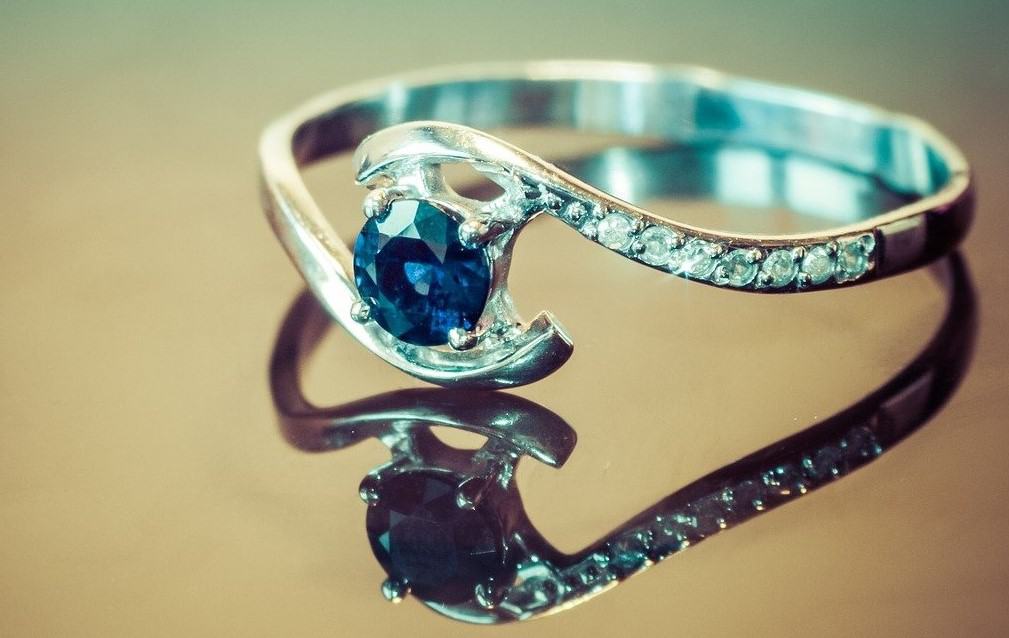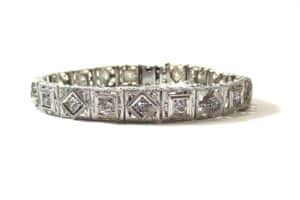Keeping the jewelry clean can be tricky to achieve. Sapphire is one such piece of jewelry that starts getting cloudy when you don’t take proper care of it. Sapphires lose their sparkle when dirt, dust, or any residue starts accumulating. Thus, it becomes essential for you to keep it clean.
As a jewelry enthusiast, you would be looking forward to knowing why Sapphire loses its shine over time. This column discusses Sapphire’s dullness and how you can keep it dazzling even after years of possessing it.
Do sapphires lose their sparkle?
Yes! Sapphire loses its sparkle over time. Sapphires get dull when dirt, dust, or residue covers them. This offers a cloudy look on the Sapphire stone.
Some of the reasons why sapphire loses their sparkle are:
- Improper or no cleaning.
- Color and make of the Sapphire
- Sunlight
CAUSE OF DULLNESS
Why does my Sapphire get dull?
The primary cause of dullness has always been dirt and dust. However, the scientific reason states the cause of dullness is its type. The Sapphire stone, as you know, comes from the Corundum mineral family. Corundum is those minerals that easily attract dust and dirt to create a thin film-like layer on the surface. This thin layer makes your sapphire stone appear dull.
Some other reasons for dullness include:
- Flaws in the stone
Sapphires undoubtedly form naturally, but that doesn’t conclude that it will remain flawless. The natural sapphires even may have some blemishes hidden by polish. However, these blemishes again show up with time.
- Trapping of air bubbles
Trapping of air bubbles is more common in natural Sapphire. Sometimes cracks develop on Sapphire due to heat and trap air bubbles inside it. These air bubbles make your Sapphire stone hazy from inside. You can perform a breath test to know whether the Sapphire has any crack that can trap air bubbles.
- Inclusions
Inclusions are one more reason that makes your Sapphire dull. Inclusion is a term in mineralogy that defines the trapping of foreign substances inside Sapphire during its natural formation. In most gemstones, inclusion is common and can be a reason for dullness.
- Types and make
The type and make also influence the dullness of Sapphire. The Yellow sapphires are the common ones that fade their colors.
- Internal atomic reactions
Atomic reactions and changes in wavelengths of light also make the Sapphire dull.
ELEMENTAL EXPOSURE

Why is my Sapphire dull?
The elemental exposure refers to the exposure of Sapphire to the surrounding and other elements present. The most common exposures that create elemental damages are:
Heat: While exposure to sunlight is good for Sapphire, especially yellow sapphire, excessive exposure to sunlight makes the Sapphire dry and creates cracks on them. These cracks trap air bubbles to become cloudy.
Light: The changing wavelength of lights also damages Sapphire.
Cold: Very cold winds may give thermal shock to low grade sapphires.
Chemicals: One more common elemental exposure is exposure to chemical substances. Chemicals create corrosion on the sapphire surface and make it dull.
Does Sapphire fade in sunlight?
Yes! Sapphires of any kind, irrespective of their variety, will exhibit minimal signs of fading with sunlight. Whether it is pink Sapphire, Blue Sapphire, or orange sapphires, you may witness dullness with the varying wavelength of light.
Further, excessive exposure to sunlight makes the Sapphire dry. This, as a result, also develops cracks on the sapphires. Unless it is necessary, you must keep it safe from excessive sunlight by using a jewelry box.
MAKE & AGE
Make is a responsible attribute for dullness on the Sapphire. The Sapphire that you find in the market is of three types based on their make. All these sapphire types also vary in properties. It includes:
- Natural Sapphire
The natural Sapphire are the ones forming naturally in the ground. It takes years for the formation of these gemstones. The pressure and atmospheric conditions are factors responsible for the formation of these natural sapphires.
- Lab-created Sapphire
The Lab-created sapphires are another form of Sapphire that shares the exact physical, chemical, and optical properties of natural ones. However, the formation of lab-created Sapphire commences in a controlled process inside a lab. In contrast to natural, lab-created sapphires tend to have no flaws, inclusion, and dullness. This is because; protected surrounding always results in clearer stones.
- Fake Sapphire
Fake Sapphires are the ones that are neither natural nor lab-created. These sapphires circulate in the market to fool consumers. Fake sapphires are the ones that easily appear dull. If you witness the instant appearance of scratches in your Sapphire, then they may be fake ones. The natural and lab-created have physical properties that make them durable against damages.
You can also categorize the Sapphire in terms of color when you are talking about making. In colors, you can find:
- Blue Sapphire
- Pink Sapphire
- Yellow Sapphire
- Orange Sapphire
- Teal sapphire
- Green Sapphire
- Purple Sapphire
- White Sapphire
The yellow and white Sapphire are the most common sapphire types to lose sparkle. The fading of Sapphire is a natural process. However, you can regenerate them.
Further, there is no such theory that states Sapphire will lose sparkle with age. Fake Sapphire, Dust accumulation, and Color fading in yellow sapphires are the only reason for dullness.
Does lab-created Sapphire get cloudy?
Yes! Lab-created Sapphire gets cloudy. But they have fewer chances of getting cloudy. The Sapphires made in the lab are always achieved in a controlled environment. This prevents the formation of any air bubbles, cracks, or inclusions on the surface of Sapphire. The only case left here is an accumulation of residue or chemical corrosion.
Do sapphires darken with age?
No, there is no such record of sapphires that you will find darkening with age. However, yellow sapphires sometimes darken when kept in sunlight to activate. This is because gemstones, if active, respond to the surrounding energies.
Otherwise, Sapphire may lose color or fade color, but darkening is merely possible. The only possible way of appearance change is color fading or dullness.
- Color fading-This is more common in yellow and white Sapphire. The color on these sapphires fades with time.
- Dullness-This is an appearance you will notice due to the accumulation of dirt and dust. It creates a film-like substance that makes your Sapphire appear dull.

How do you polish a sapphire?
Sapphire polishing indulges several approaches. You can polish a sapphire stone using a mechanical process or chemical process. However, one more hybrid process empowers polishing, and that is the chemical mechanical process or CMP.
Mechanical process
The mechanical process of polishing is the outer surface polishing of Sapphire using laps. Laps are the abrasive surface that gets rubbed against your Sapphire surface to make it shiny. There are several laps available for several purposes.
- Copper lap- These laps are usually pre-polish laps to remove the thin layer of residue on the Sapphire.
- Ceramic/cast iron lap- These laps are best suitable for removing scratches
- Batt Lap- It is a type of lap comprising of the harder abrasive surface. These laps are often used for achieving flat sides in Sapphire.
Chemical polishing
The Sapphire stone that you wear also gets dull for exposure to chemicals. Often chemicals in food particles or any other elements creates dullness on the sapphire stone. The chemical polishing removes all the chemical corrosion present on the surface of Sapphire.
The pH level is what decides the chemical suitability to remove dullness on your sapphire stone. The chemical solutions used for sapphire polishing are:
- Silica-based slurry
- Alpha-alumina based slurry
Chemical Mechanical polishing (CMP)
This polishing process is an amalgamation of both mechanical and chemical processes to achieve a higher degree of shine.
How do I make my sapphire ring shiny again?
You need to clean your Sapphire ring in order to make it shiny again.
- To clean your sapphire ring, you need to make the solution first. There are two types of solutions for cleaning the sapphire ring. You can use warm water with mild dish wash soap or use ammonia with six portions of water.
- After making the solutions, you can then soak the Sapphire ring into the solution.
- After leaving it for some time, you can then scrub it using a soft bristle brush. However, you should not be hard on the stone.
- After scrubbing, rinse the stone in warm water and use a soft cotton cloth to clean it.
- Always use a soft bristled brush or a muslin cloth
- Never use a sharp or pointed object to clean dirt or grit from the jewelry item. It may loosen the stone in it’s setting
- Do not use any harsh cleaning solution
- When washing in the basin, keep a meshed cloth on the drain. It will catch any loose pieces of gemstones in your jewelry
- Never use hot water
How do you keep a Sapphire shiny?
Keeping Sapphire shiny may seem tedious to achieve. However, you can still maintain the shine with the right care. Here are some dullness prevention tips to keep your Sapphire Shiny.
- Avoid applying thick lotions on the body if you are using Sapphire as an ornament to wear; the residue can build a film that will make Sapphire appear dull
- Don’t use your Sapphire ring or any other ornament while cooking. Food and cooking ingredients like oils have chemicals that can affect Sapphire
- Avoid wearing them in excessive heat.
Conclusion
Sapphires are beautiful stones. Taking care of your Sapphire is really important to keep them in good shape. Also store them under the right conditions so that they do not develop cracks or get cloudy.




